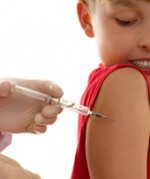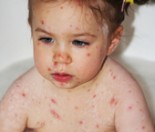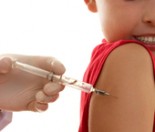This Mumps article give parents concise information on the signs and symptoms of mumps and how to care for a child with mumps at home.
What is Mumps?
Mumps was once a common childhood illness, but is now fairly rare due to immunisation.
It is a viral illness caused by the myxo virus group and causes pronounced swelling on both sides of the jaw, as the salivary (parotid) glands become inflamed. Swelling normally starts on one side of the face and spreads to the other. It is normally considered a mild illness.
Mumps takes around 17-19 days to incubate (the time from first exposure to the virus until when the appearance of symptoms) and is infectious from a few days before the glands enlarge, until they are back to normal. It normally takes a week for the swollen glands to disappear and 10-12 days to fully recover from mumps.
Most cases of mumps are seen in children between 5-14 years. It is rare in children under one year old. Once your child has recovered from mumps they have lifelong immunity from the illness.
Vaccination against the disease now forms part of the MMR (Measles Mumps Rubella) vaccine at 15 months and 4 years for all children in NZ. Check for possible vaccine side effects in the Immunisation Schedule.
What are the signs and symptoms of mumps?
- Feeling unwell with a mild fever
- Headache
- Loss of appetite
- Nausea and vomiting
- Swelling and tenderness of the salivary glands on one or both sides of the jaw and beneath the chin. Swelling in the face normally gets worse over 1-3 days
- Sore throat
- Muscle aches
- Ear ache
- Painful testicles in boys (orchitis) – though this is rare before puberty
What is the treatment for mumps?
- Visit your doctor for a definite diagnosis.
- Treat your child at home with rest, fluids and measures to keep your child’s temperature down (cool sponging, paracetamol at the appropriate dose)
- Paracetamol will also help with pain – check the correct dose for age on the bottle
- Chewing will possibly make pain worse so give your child soft sloppy foods.
- It will be easier for them to drink using a straw.
- Increase fluids with water and diluted fruit drinks
- Avoid citrus fruits and citrus drinks which increase saliva flow and may increase pain
- Warm compresses to the side of the face may help make your child more comfortable
- Keep your child away from other children until they are better
- Keep your child’s eating utensils separate from the family’s until they are better
- Be aware that the infection spreads by droplet spray – when your child is sneezing, coughing, laughing
- If there are adolescent boys or adult men in the house who have not been vaccinated against mumps or have not had mumps, try to keep them away from the child while they are contagious
- Contact your doctor if a fever stays high, your child will not drink or becomes drowsy.
Risks & complications of mumps
Perhaps the most widely known complication of mumps is infertility in adult men, though this is actually rare. Occasionally just one testicle is involved and mumps may leave it smaller in size than the other. Mumps may occasionally affect the ovaries in female children.
Other complications include meningitis, encephalitis (inflammation of the brain) and pancreatitis (inflammation of the pancreas). Mumps can also cause permanent deafness.
Contact your doctor immediately if you see any sign of stiff neck, extreme drowsiness, severe headache or your child has a convulsion.
What can I do to help my child with mumps?
Check your child’s temperature, which can be done in several ways:
- Feel your child’s forehead with the palm of your hand or cheek to see if it feels hot
- A normal temperature taken by a mouth thermometer is around 36.5 – 37º c in children. An armpit temperature reading is about 0.5 ºc lower
- An ear sensor thermometer is easier to use with a restless child, but must be checked a couple of times to ensure readings are correct
- Your child may look flushed and sweaty
- Remember that often a fever is your child’s body fighting off infection
Lower your child’s temperature, using the following simple methods:
- Keep the room cool and dress your child in light, cotton pyjamas
- Give plenty of fluids to drink
- Cool sponge with tepid water and dry gently
- Leave a cool flannel on the forehead
- Let hands rest in a basin of lukewarm water
- Give paracetamol at appropriate doses for age if temperature is over 38 ºc
- If you are worried that your child’s fever is persisting, is getting too high, or that your child is becoming dehydrated or drowsy, contact your doctor immediately.
Helpful Articles
To read more about immunisation, read our series of Kiwi Families articles:
Where to go gives you information on how to obtain immunisation for your child.
Informed Choice discusses the advantages and disadvantages of immunisation.
Immunisation Schedule explains the procedure and how you can help your child.
For information on other Ear, Nose, Throat & Respiratory problems, click here








